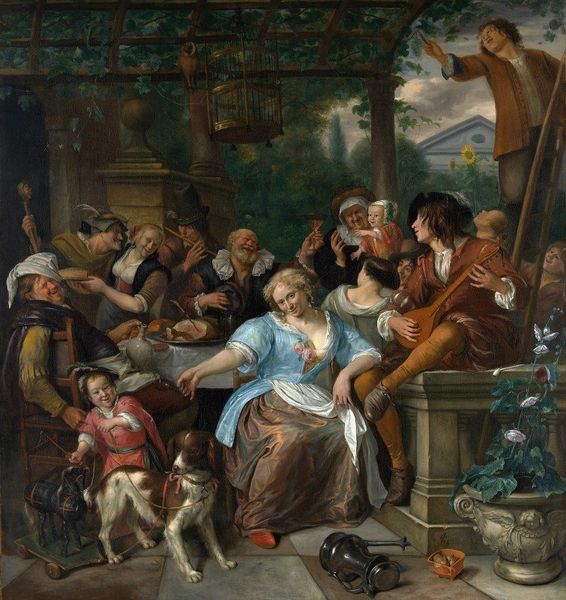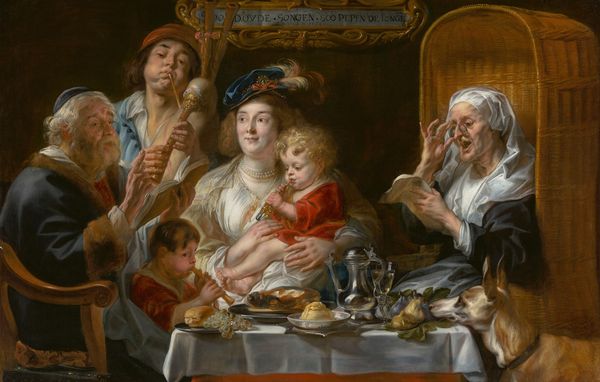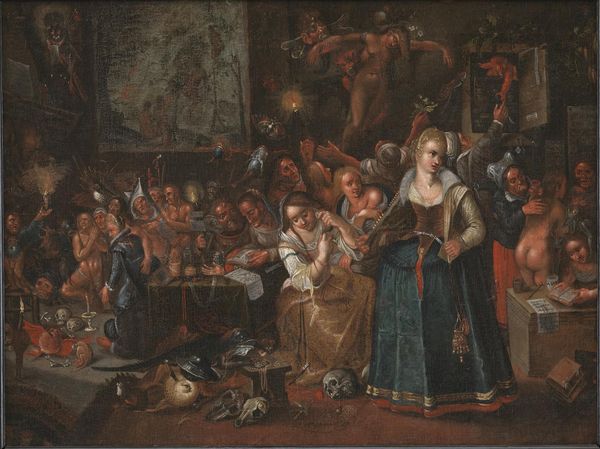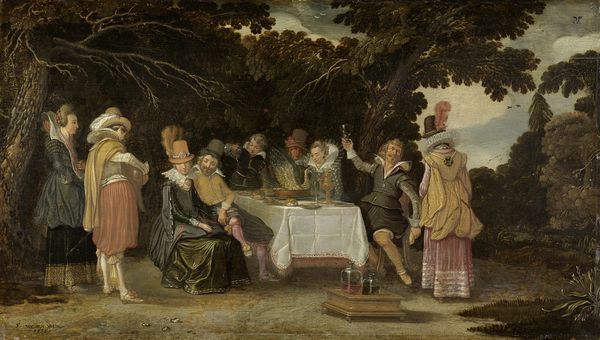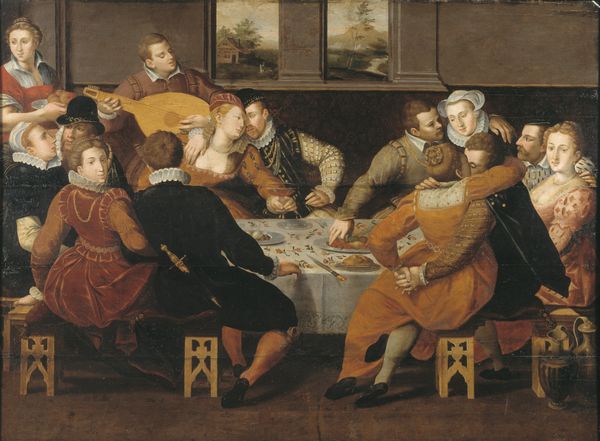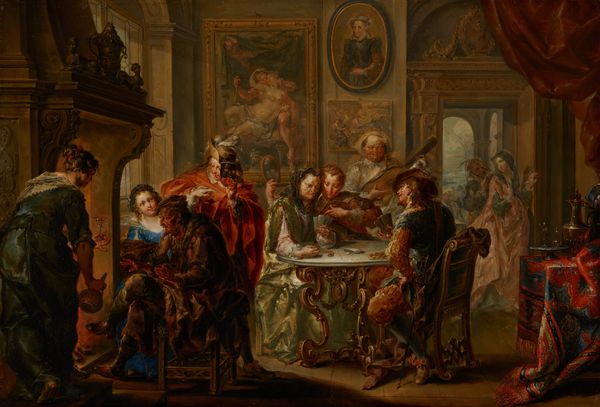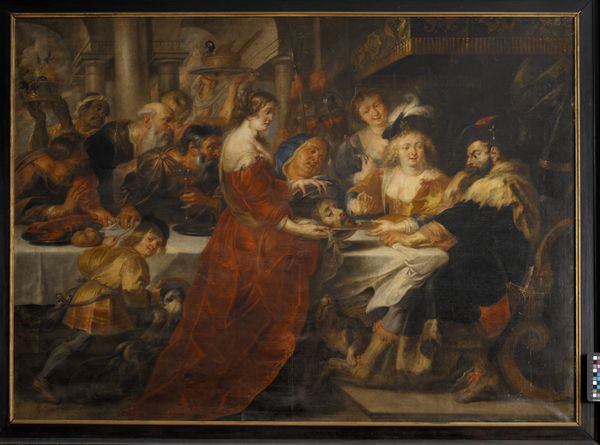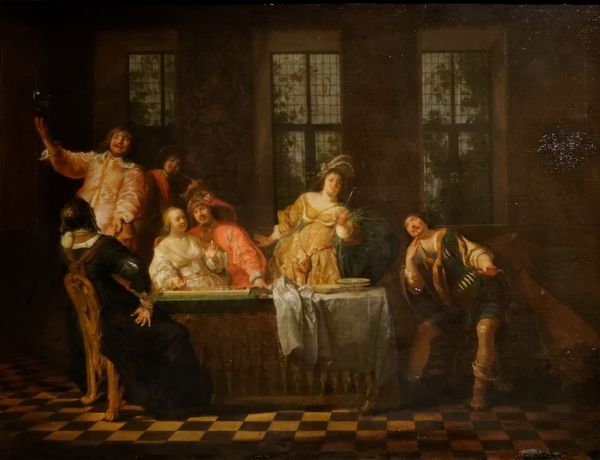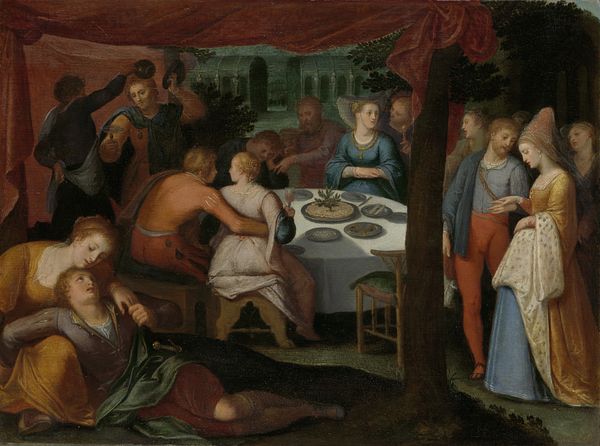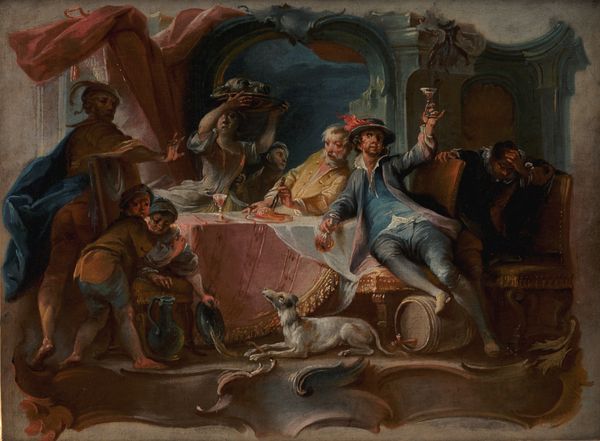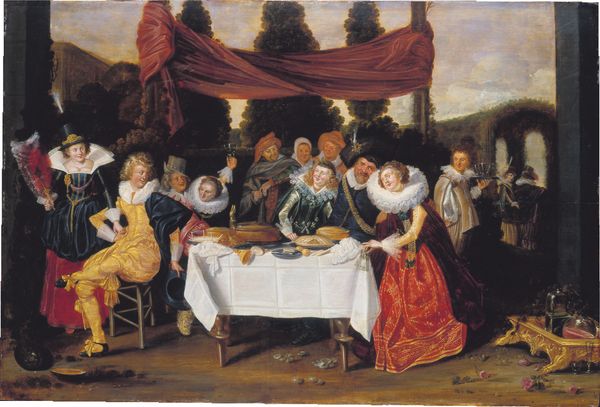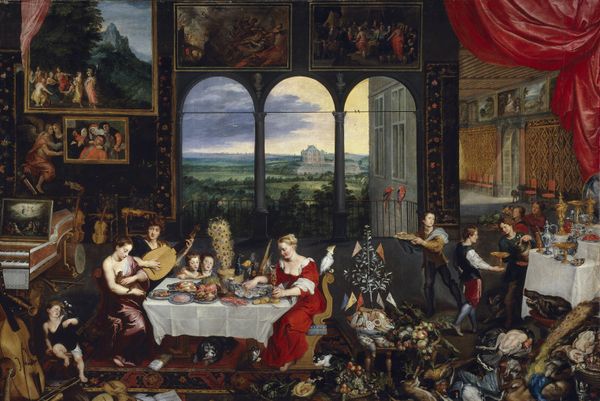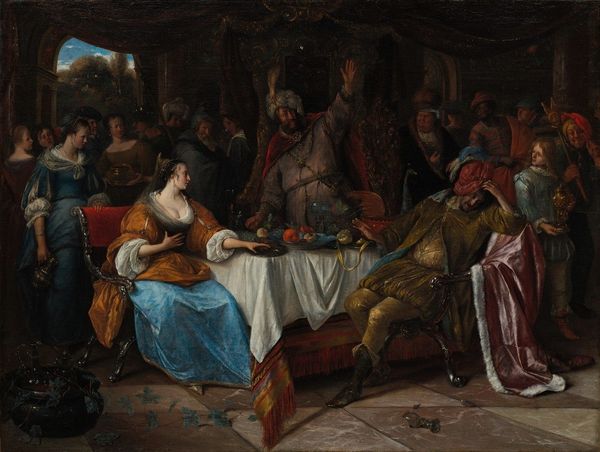
painting, oil-paint
#
portrait
#
narrative-art
#
baroque
#
painting
#
oil-paint
#
figuration
#
genre-painting
Copyright: Public domain
Editor: Here we have Jan Cossiers's *The Parable of the Prodigal Son*, painted around 1630 using oil. It's got such a rich, almost decadent feeling, with all the people, food and drink. I'm struck by the theatricality of the figures; it's like looking at a play on canvas! What’s your take on it? Curator: The Prodigal Son—such a popular theme then and now. I love how Cossiers uses the parable almost as a wink and a nudge, really, at earthly delights. But do you notice how almost *everyone* seems slightly 'off'? Something uneasy? Editor: Now that you mention it... Their expressions seem a little too exaggerated, almost caricatured. What purpose might that exaggeration serve? Curator: Precisely! He is exploring a theme, but through the *theatre* of moral failing! The abundance—food, drink, even human contact—is almost repulsive in its excess. Is it a celebration? Or a warning, disguised as a party? Think of it: does anyone truly look happy here? Editor: I see what you mean! Maybe he's using the scene of indulgence to critique, or at least question, those behaviours rather than celebrate them. Curator: Or even acknowledge, perhaps? Cossiers has painted a stage – do we see a play, or a mirror? Look at how the central figures seem almost... caught. Like actors aware of an audience, a final judgment. Even the palette hints: brightness fighting darkness for stage control. Is there perhaps, just the slightest trace of that darkness in ourselves? Editor: That's a compelling thought! I had seen the rich details and implied narrative, but didn't think to look beyond the obvious celebration. This feels more layered now. Thank you! Curator: You’ve cracked the surface, peeled back one of many veneers! And to think, it began with noticing those subtly *off* faces. A play within a painting - isn't it magnificent?
Comments
No comments
Be the first to comment and join the conversation on the ultimate creative platform.
